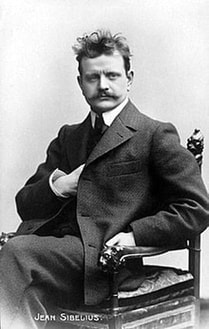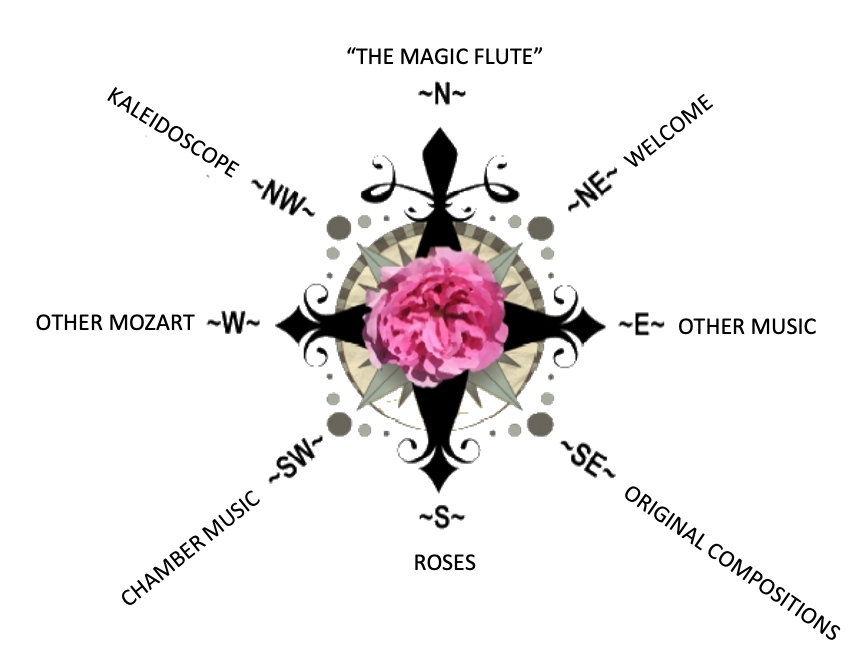- Home
- N - The Magic Flute
- NE - Welcome!
-
E - Other Music
- E - Music Genres >
- E - Composers >
-
E - Extended Discussions
>
- Allegri: Miserere
- Bach: Cantata 4
- Bach: Cantata 8
- Bach: Chaconne in D minor
- Bach: Concerto for Violin and Oboe
- Bach: Motet 6
- Bach: Passion According to St. John
- Bach: Prelude and Fugue in B-minor
- Bartok: String Quartets
- Brahms: A German Requiem
- David: The Desert
- Durufle: Requiem
- Faure: Cantique de Jean Racine
- Faure: Requiem
- Handel: Christmas Portion of Messiah
- Haydn: Farewell Symphony
- Liszt: Évocation à la Chapelle Sistine"
- Poulenc: Gloria
- Poulenc: Quatre Motets
- Villa-Lobos: Bachianas Brazilieras
- Weill
-
E - Grace Woods
>
- Grace Woods: 4-29-24
- Grace Woods: 2-19-24
- Grace Woods: 1-29-24
- Grace Woods: 1-8-24
- Grace Woods: 12-3-23
- Grace Woods: 11-20-23
- Grace Woods: 10-30-23
- Grace Woods: 10-9-23
- Grace Woods: 9-11-23
- Grace Woods: 8-28-23
- Grace Woods: 7-31-23
- Grace Woods: 6-5-23
- Grace Woods: 5-8-23
- Grace Woods: 4-17-23
- Grace Woods: 3-27-23
- Grace Woods: 1-16-23
- Grace Woods: 12-12-22
- Grace Woods: 11-21-2022
- Grace Woods: 10-31-2022
- Grace Woods: 10-2022
- Grace Woods: 8-29-22
- Grace Woods: 8-8-22
- Grace Woods: 9-6 & 9-9-21
- Grace Woods: 5-2022
- Grace Woods: 12-21
- Grace Woods: 6-2021
- Grace Woods: 5-2021
- E - Trinity Cathedral >
- SE - Original Compositions
- S - Roses
-
SW - Chamber Music
- 12/93 The Shostakovich Trio
- 10/93 London Baroque
- 3/93 Australian Chamber Orchestra
- 2/93 Arcadian Academy
- 1/93 Ilya Itin
- 10/92 The Cleveland Octet
- 4/92 Shura Cherkassky
- 3/92 The Castle Trio
- 2/92 Paris Winds
- 11/91 Trio Fontenay
- 2/91 Baird & DeSilva
- 4/90 The American Chamber Players
- 2/90 I Solisti Italiana
- 1/90 The Berlin Octet
- 3/89 Schotten-Collier Duo
- 1/89 The Colorado Quartet
- 10/88 Talich String Quartet
- 9/88 Oberlin Baroque Ensemble
- 5/88 The Images Trio
- 4/88 Gustav Leonhardt
- 2/88 Benedetto Lupo
- 9/87 The Mozartean Players
- 11/86 Philomel
- 4/86 The Berlin Piano Trio
- 2/86 Ivan Moravec
- 4/85 Zuzana Ruzickova
-
W - Other Mozart
- Mozart: 1777-1785
- Mozart: 235th Commemoration
- Mozart: Ave Verum Corpus
- Mozart: Church Sonatas
- Mozart: Clarinet Concerto
- Mozart: Don Giovanni
- Mozart: Exsultate, jubilate
- Mozart: Magnificat from Vesperae de Dominica
- Mozart: Mass in C, K.317 "Coronation"
- Mozart: Masonic Funeral Music,
- Mozart: Requiem
- Mozart: Requiem and Freemasonry
- Mozart: Sampling of Solo and Chamber Works from Youth to Full Maturity
- Mozart: Sinfonia Concertante in E-flat
- Mozart: String Quartet No. 19 in C major
- Mozart: Two Works of Mozart: Mass in C and Sinfonia Concertante
- NW - Kaleidoscope
- Contact
GRACE WOODS MUSIC SESSION: AUGUST 29, 2022
Orchestral Music of Jean Sibelius
by Judith Eckelmeyer
by Judith Eckelmeyer
Finnish composer Jean Sibelius’s long life (1865-1957) would suggest a corpus of works lasting at least well into the mid- or late-1960s; the reality, rather shockingly, is that his last collection is an unpublished set of piano works marked Op. 114, composed in 1929, which followed the last published works, the orchestral tone poem Tapiola, Op. 112 in 1926, and Masonic Ritual Music, Op. 113, for male chorus and organ, in 1927.
Sibelius's Op. 114 | Annet Serwaday, piano
Sibelius's Tapiola, Op. 112 | Finish RSO, Paavo Berglund, conductor
Sibelius's Masonic Ritual Music, Op. 113 for male chorus and organ
Performed by Mika Pohjonen, tenor and the Lahti Symphony Orchestra
Jaakko Kuusisto, conductor | Pauli Pietiläinen, organ
Performed by Mika Pohjonen, tenor and the Lahti Symphony Orchestra
Jaakko Kuusisto, conductor | Pauli Pietiläinen, organ
I. No. 1. Avaushymni (Opening Hymn, for orchestra) 00:00-02:10
II. No. 2. Suloinen aate (Thoughts be our Comfort) 02:10-04:15
III. No. 3. Kulkue ja Hymni (Procession and Hymn): Naatko kuinka hennon yrtin (Though Young Leaves Be Green) 04:15-06:55
IV. No. 9. Ylistyshymni (Hymn) (1946) 06:55-09:45
V. No. 7. Hymni (Hymn): Kella kaipuu rinnassansa (Whosoever Hath a Love) 09:45-11:35
VI. No. 8. Veljesvirsi (Ode to Fraternity) (1946) 11:35-14:35
VII. No. 4. Kulkue ja Hymni (Procession and Hymn): Ken kyynelin (Who Ne'er Hath Blent His Bread with Tears) 14:35-18:05
VIII. No. 10. Marche funebre (Funeral March, for orchestra) 18:05-23:00
IX. No. 6. Salem (Onward, Ye Brethren) 23:00-26:00
X. No. 11. Suur' olet, Herra (Ode) 26:00-28:25
XI. No. 5. On kaunis maa (How Fair Are Earth and Living) 28:25-30:20
II. No. 2. Suloinen aate (Thoughts be our Comfort) 02:10-04:15
III. No. 3. Kulkue ja Hymni (Procession and Hymn): Naatko kuinka hennon yrtin (Though Young Leaves Be Green) 04:15-06:55
IV. No. 9. Ylistyshymni (Hymn) (1946) 06:55-09:45
V. No. 7. Hymni (Hymn): Kella kaipuu rinnassansa (Whosoever Hath a Love) 09:45-11:35
VI. No. 8. Veljesvirsi (Ode to Fraternity) (1946) 11:35-14:35
VII. No. 4. Kulkue ja Hymni (Procession and Hymn): Ken kyynelin (Who Ne'er Hath Blent His Bread with Tears) 14:35-18:05
VIII. No. 10. Marche funebre (Funeral March, for orchestra) 18:05-23:00
IX. No. 6. Salem (Onward, Ye Brethren) 23:00-26:00
X. No. 11. Suur' olet, Herra (Ode) 26:00-28:25
XI. No. 5. On kaunis maa (How Fair Are Earth and Living) 28:25-30:20
There are some prior instances of a long hiatus following a productive early career. Gioachino Rossini’s prolific operatic output, for instance, stopped abruptly after he completed “William Tell” in 1829—BUT he continued composing in other genres until very close to his death in 1868. Sibelius, however, stopped composing entirely for the last 28 years of his life. He also stopped public appearances as a conductor in 1921. He spent those final years living quietly with his wife, Aino, in a villa built for him in Järvenpää, near Helsinki.
Why would Sibelius, an apparently internationally-acclaimed composer who was especially perceived in his homeland as an unequalled advocate of his country’s history and culture, abandon his art? A number of reasons have been put forward: In spite of continuing great popularity in the U.S., Great Britain, and Scandinavia, there was a decline in interest in his music in Germany and more generally on the continent. Further, a late symphony completed in 1929 remained unpublished, more or less reinforcing a growing doubt in his mind concerning his compositional direction at a time when European composer had begun to move well away from traditional musical language to increasingly radical experimentation. And, perhaps under everything, his health was taking a serious hit from his life-long habits of heavy drinking and smoking.
A look at Sibelius’s life can illuminate aspects of his music. His parents were Swedish-speaking, and although living in southern Finland, Jean didn’t formally learn Finnish until he was 11 and in school. As a young student, he became interested in Finnish lore by first reading the national epic Kalevala. After his father’s death when Jean was but 2 or 3 years old, he was raised along with his two siblings by his mother and grandmother. Although the family was interested in music, his serious musical study began only in his young teens when he studied violin and began composing chamber works. His education continued in Vienna, Berlin, and Helsinki; through his travels he became acquainted with music of Tchaikovsky, Richard Strauss and others. He began his major orchestra works around 1891 and 1892, with Kullervo, a dark episode in the Kalevala, followed throught the 1890s by the principal orchestral pieces En saga, Karelia, and the Lemminkäinen Suite. In these works his compositional style was developed and defined and his use of the orchestra, especially brass and winds, took on their enduring characteristics.
In 1899 the first of his 7 published symphonies appeared.
Sibelius's Kullervo
Finnish Radio Symphony Orchestra - 75th Jubilee Concert, conducted by Jukka-Pekka Saraste
Finnish Radio Symphony Orchestra - 75th Jubilee Concert, conducted by Jukka-Pekka Saraste
Sibelius's En saga
Philharmonia Orchestra, Vladimir Ashkenazy, conductor
Philharmonia Orchestra, Vladimir Ashkenazy, conductor
Sibelius's Karelia Suite
Philharmonia Orchestra, Vladimir Ashkenazy, conductor
Philharmonia Orchestra, Vladimir Ashkenazy, conductor
Sibelius's Lemminkäinen Suite
Finnish Radio Symphony Orchestra, conducted by Jukka-Pekka Saraste
Finnish Radio Symphony Orchestra, conducted by Jukka-Pekka Saraste
Judith Eckelmeyer ©2022
Choose Your Direction
The Magic Flute, II,28.





